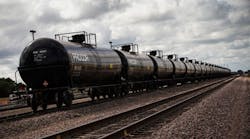NEW YORK - Oil production in North Dakota, home to large swaths of the Bakken shale oil play, hit the 1 million barrels per day (bpd) mark in April, data from the state's Department of Mineral Resources showed on Tuesday.
The state had expected to reach this milestone some time at the end of last year, but a fierce winter slowed production, delaying growth.
Nevertheless, output from the oil play has grown quickly. In April of last year, the state was producing 790,000 bpd and in January 2013, output was just 740,000 bpd.
Lynn Helms, head of the department, said he expected production to continue to grow to 1.5 million bpd by the end of 2017.
"We think that the increasing efficiency in drilling and well completions will allow the industry to sustain that 1.5 million bpd for 10 years more," he told a monthly conference call.
The shale oil revolution of the past three to four years has made sparsely populated North Dakota the second largest oil-producing state in the country and helped reverse declining oil output in the United States.
Helms said he saw output growth exceeding 20,000 bpd in each month from May to July as there was a backlog of 600 wells to be completed, meaning hydraulically fractured and made ready to pump oil.
"I am still anticipating a major attack on these 600 wells. ... There are 50% more wells that are coming on production than normal in May, June, July," Helms said.
The number of well completions in April amounted to 200, far above the 90-well threshold needed to keep output steady.
The number of North Dakota barrels being transported out of the state by rail fell slightly to 63% from 66% in March as the spread between U.S. crude oil futures and global benchmark Brent tightened.
The wider the spread, the more affordable it is for consumers of Bakken oil, mainly refineries on the East and West coasts, to transport it by rail to their plants. Pipeline infrastructure out of North Dakota continues to lag behind oil production.
An expanded gas processing plant at Tioga, in Williams County, has ramped up to full capacity, the department said. The facility is crucial to cut high levels of gas flaring from oil fields due to a lack of infrastructure.
Hess Corp, which operates the facility, had said earlier the gas plant would have a capacity of processing 250 million cubic feet of gas per day and could rise to above 300 mmcf/d.
In April, companies flared 29% of gas produced -- still far above a national average of about 1% in 2009, before the onset of the shale oil boom, according to the Energy Information Administration.
(Reporting by Sabina Zawadzki; Editing by Jonathan Oatis)
Copyright Reuters, 2014



